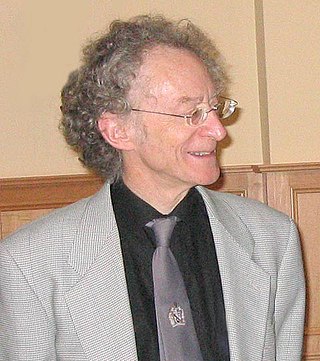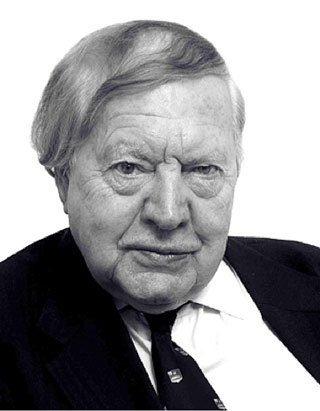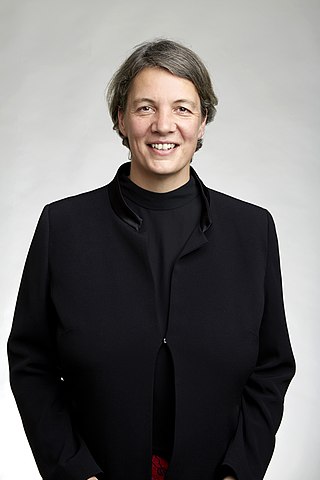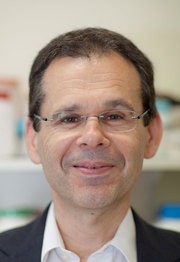Related Research Articles
The Royal Australian Chemical Institute (RACI) is both the qualifying body in Australia for professional chemists and a learned society promoting the science and practice of chemistry in all its branches. The RACI hosts conferences, seminars and workshops. It is the professional body for chemistry in Australia, with the ability to award the status of Chartered Chemist (CChem) to suitably qualified candidates.

John William White FAIP FRACI was a Professor of Physical and Theoretical Chemistry, Research School of Chemistry, at the Australian National University.
The Australian Academy of Technology and Engineering (ATSE) is a learned academy that helps Australians understand and use technology to solve complex problems. It was founded in 1975 as one of Australia's then four learned academies. Its original name was the 'Australian Academy of Technological Sciences', but in 1987 the name was lengthened to include Engineering, as 'Australian Academy of Technological Sciences and Engineering'. In 2015, the Academy adopted a new business name, the 'Australian Academy of Technology and Engineering', reserving the Australian Academy of Technological Sciences and Engineering as its company name.

Robin John Batterham AO FREng FAA FTSE is an Australian scientist specialising in chemical engineering. He was the Chief Scientist of Australia from 1999 to 2006.

Noel Sydney HushAO FRS FNAS FAA FRACI FRSN was an Australian chemist at the University of Sydney.

Michelle Yvonne Simmons is an Australian quantum physicist, recognised for her foundational contributions to the field of atomic electronics.

Tanya Mary Monro is an Australian physicist known for her work in photonics. She has been Australia's Chief Defence Scientist since 8 March 2019. Prior to that she was the Deputy Vice Chancellor, Research and Innovation (DVCR&I) at the University of South Australia. She was awarded the ARC Georgina Sweet Australian Laureate Fellowship in 2013. She was the inaugural chair of photonics, the inaugural director of the ARC Centre of Excellence for Nanoscale Biophotonics and the inaugural director of the Institute for Photonics & Advanced Sensing (IPAS), and the inaugural director of the Centre of Expertise in Photonics (CoEP) within the School of Chemistry and Physics at the University of Adelaide. Monro has remained an adjunct professor of physics at the University of Adelaide following her departure from the institution. In 2020 she was awarded the title of Emeritus Professor at the University of South Australia.
Ian Geoffrey Gould is a former Chancellor of the University of South Australia (2008–2015) and former Managing Director (Australia) of Rio Tinto Group. Gould is considered to be one of South Australia's most influential people.

Graeme John Jameson is an engineer, professor and Director of the Centre for Multiphase Processes at the University of Newcastle, Australia, in New South Wales, Australia. He is notable for being the inventor of the Jameson Cell mineral separation device, which he devised in the 1980s. The Jameson Cell uses bubbles to separate super fine particles during mineral processing. It is based on the froth flotation mineral separation process, first invented in 1905.

Anthony Steven Weiss AM PhD FRSC FTSE FRSN FRACI, FTERM, FBSE is a university researcher, company founder and entrepreneur. He is the leading scientist in human tropoelastin research and synthetic human elastin. He holds the McCaughey Chair in Biochemistry, heads the Charles Perkins Centre Node in Tissue Engineering and Regenerative Medicine, and is Professor of Biochemistry and Molecular Biotechnology at the University of Sydney. His discoveries are on human elastic materials that accelerate the healing and repair of arteries, skin and 3D human tissue components. He is a Fellow of the Royal Society of Chemistry. Weiss is on the editorial boards of the American Chemical Society Biomaterials Science and Engineering, Applied Materials Today (Elsevier), Biomaterials, Biomedical Materials, BioNanoScience (Springer) and Tissue Engineering. He is a biotechnology company founder, promoter of national and international technology development, and has received national and international awards, including the Order of Australia.
Professor David Lloyd is a Dublin-born and educated university executive and academic.

David Henry Solomon is an Australian polymer chemist. He is best known for his work in developing Living Radical Polymerization techniques, and polymer banknotes.
Denis Oswald Jordan AO FAA FRACI was an Anglo-Australian chemist with a distinguished career as a researcher and lecturer in Chemistry at both University College Nottingham (1940–53) and the University of Adelaide, where he was Angas Professor of Chemistry from 1958 to 1982. Jordan also served as president of Australian Institute of Nuclear Science and Engineering from 1958 to 1962, and Royal Australian Chemical Institute from 1978 to 1979.

Margaret Mary Sheil is an Australian academic and the Vice Chancellor and President of Queensland University of Technology.
Thang Hoa San is an Australian chemist of Chinese-Vietnamese background.
John Francis Lovering was an Australian geologist. He was Professor of Geology at the University of Melbourne from 1969 to 1987 and Vice-Chancellor of Flinders University from 1987 to 1995.
Sir James William FootsAOFTSEHonFAusIMMMIMMFCIC was an Australian mining engineer and Chairman of Mount Isa Mines and Chancellor of the University of Queensland.
Alban Jude LynchAOHonFAusIMM was a mining engineer and academic who helped develop the mineral processing teaching experience for mining students in Australia.

James Richard MayFTSE HonFAusIMM was an Australian chemical engineer and company director who was the Chief Executive Officer of the Australian Minerals Industry Research Association Limited (AMIRA) between 1968 and 1994. He was also a fellow of a number of chartered institutions and organisations and was on various committees and academic associations and institutes.
References
- 1 2 3 4 5 Pearce, Suzannah (2005). Who's Who in Australia, 1906-2006, XLII Edition. Crown Content Pty Ltd. p. 1620. ISBN 1740950232.
- 1 2 3 4 5 6 7 John, Ralston (2015). "Laureate Professor John Ralston". The University of South Australia . Retrieved 28 October 2023.
- 1 2 3 4 5 "Introducing our 2020 AusIMM Award recipients". Australasian Institute of Mining and Metallurgy . 1 April 2020. Retrieved 28 October 2023.
- 1 2 3 4 5 6 7 8 "Emeritus Laureate Professor John Ralston AO FAA FTSE" (PDF). ETH Zurich . Retrieved 28 October 2023.
- 1 2 "LPrf John Ralston". Australian Research Data Commons . Retrieved 28 October 2023.
- ↑ "UniSA STEM". The University of South Australia . 2015. Retrieved 29 October 2023.
- 1 2 "University of South Australia Minerals Processing R&D Real Value to the Resources Sector for More than 30 Years" (PDF). The University of South Australia . 2012. Retrieved 28 October 2023.
- ↑ "Centenary Medal entry for Professor John RALSTON". It's an Honour, Australian Honours Database. Canberra, Australia: Department of the Prime Minister and Cabinet. 1 January 2001. Retrieved 28 October 2023.
- 1 2 "Laureate Professor John Ralston AO". The University of South Australia . Retrieved 28 October 2023.
- ↑ "Officer of the Order of Australia entry for Professor John RALSTON". It's an Honour, Australian Honours Database. Canberra, Australia: Department of the Prime Minister and Cabinet. 9 June 2008. Retrieved 28 October 2023.
- ↑ "All Fellows". Australian Academy of Technology and Engineering . 2020. Retrieved 28 October 2023.
- 1 2 3 4 "Professional Associations". The University of South Australia . 2015. Retrieved 28 October 2023.
- ↑ "Fellows elected in 2005". Australian Academy of Science . Archived from the original on 25 March 2016. Retrieved 4 November 2023.